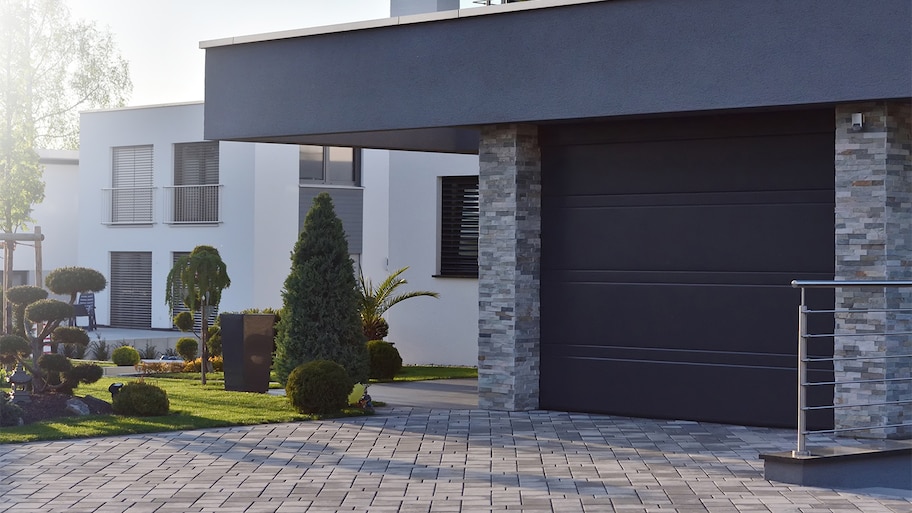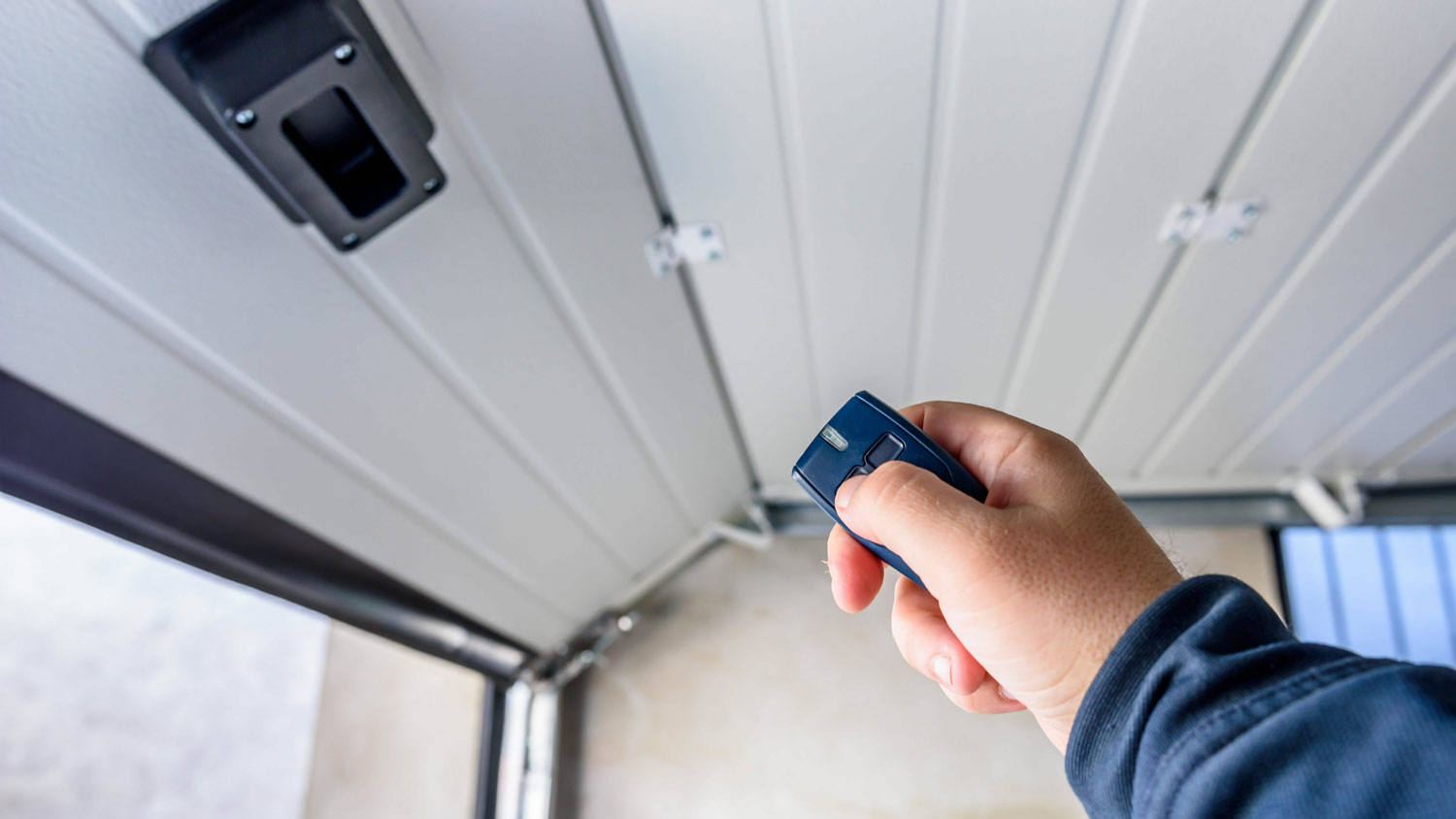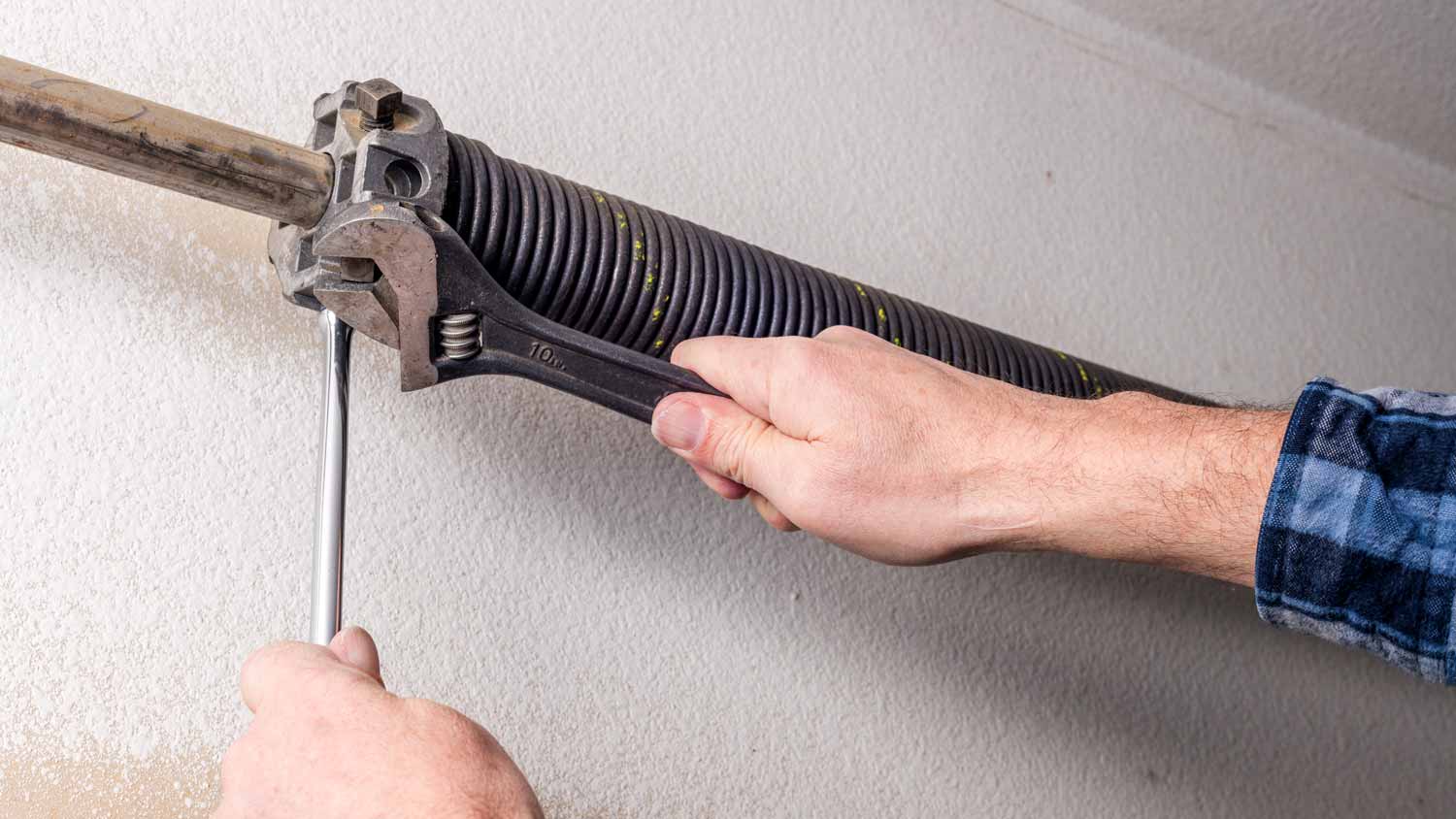
Our guide breaks down pricing factors, spring types, and why professionals help ensure safety and longevity. Learn what to expect and budget for your repair.
Turn stuck moments into smooth moves


Electrical issues can prevent a garage door from working.
Broken or misaligned components can prevent operation.
Sensors can become dirty or damaged, causing the garage door to stick.
Have you ever returned home only to find yourself out of luck because your garage door is stuck? A properly functioning garage door is an often overlooked yet essential part of your daily routine. However, when a garage door is stuck, it can cause frustration and inconvenience—afterall, nobody wants to be late for work. To quickly resolve the issue, it's crucial to understand the common underlying causes of garage door malfunctions and the next steps you should take.
An automatic garage door opener relies on electricity, and if there is a power outage, it can cause the garage door to become stuck in either the closed or open position. To test if the power outage is the cause of the issue, first, make sure that power has been restored, and then try to operate the garage door using the remote control or wall-mounted keypad. If the garage door still doesn't respond, there's likely a malfunction with the garage door or the opener.

When a garage door opener malfunctions, it can cause the door to become stuck by interfering with the normal functioning of the electric motor that drives its movement. A faulty motor, damaged wiring, or electronic component failure can be the culprit. If the opener can’t generate enough force to move the door up or down, it may get stuck in an odd position.
To diagnose an opener malfunction, start by verifying that the opener is receiving power from the electrical source. If the power is on, test the opener using both the remote control and the wall-mounted keypad. If the door doesn’t respond to either, it suggests an issue with the opener.
You should examine the wiring for loose connections and call a professional garage door technician to fix any electrical or mechanical issues. Garage door repair costs range between $150 and $360 on average.
If there are issues with the garage door tracks, it can cause the door to become stuck during operation. Blockages such as debris or small objects in the tracks can obstruct the door's path and prevent it from moving smoothly, causing it to jam. Misaligned tracks can also disrupt the rollers' movement, preventing the door from sliding properly. Damaged tracks or loose bolts or brackets can cause a misalignment.
To check for track-related issues, visually inspect the tracks for obstructions and alignment issues. Ensure that the tracks are straight, parallel, and securely attached to the garage walls, checking for loose bolts and tightening them if needed. Try to move the door along the tracks manually, and if resistance or misalignment is detected, it indicates a track problem. To properly align or repair the tracks and ensure smooth door movement, you should enlist the help of a local garage door repair pro.

Broken garage door parts, such as springs, cables, and hinges, can significantly impact a garage door's performance, making it stuck. Springs are responsible for counterbalancing the door's weight, and if even one of these springs breaks, the door may become too heavy for the opener to lift. Broken cables can also create garage door problems by preventing the door from moving. Hinges can cause issues, too, by misaligning the panels.
To check if broken components are the reason your garage door is stuck, visually inspect the springs, cables, and hinges for any wear and tear or visible damage. You can also lift the door by hand to see if it feels unusually heavy or resistant, which could indicate trouble with the springs or cables. Look for any signs of misalignment or damage to the hinges as well. If you find any of these issues, it's important to call a garage door technician to replace or repair the damaged parts.
Rollers are crucial in ensuring the garage door moves smoothly along the tracks. However, if these components become worn out or damaged, they can keep the door from an effortless glide. Worn-out rollers may cause the door to drag or produce a grinding noise during operation, while misaligned or damaged rollers may result in uneven movement or even complete immobility. As a result of the increased friction, it becomes difficult for the door to slide along the tracks, leading to it getting stuck.
Examine the rollers for signs of wear, cracks, or misalignment and try to manually open your garage door. Any wobbling, resistance, or peculiar noises imply issues with the rollers. Replacing visibly damaged or worn rollers with new ones can restore fluid movement, but it’s best to call a garage door technician if the problem persists. A technician can evaluate the problem, swap out rollers, and ensure the entire door system functions correctly.

If your garage door opens a little and then stops, it may be a sensor issue. Photo-eye sensors are common features in modern garage doors. They are located near the ground on both sides of the door and emit an invisible light beam across the opening. The sensors detect objects or obstacles that interrupt the beam and prevent the door from causing damage. However, dirty, misaligned, or damaged sensors may falsely detect an obstruction and cause the door to malfunction or get stuck.
To identify sensor problems, inspect the sensors to make sure they're clean, aligned and free from obstructions. If the problem persists, try cleaning and realigning them. If the door still isn't working well, call a professional garage door technician for sensor repairs or replacement.

The smooth operation of garage doors relies on regular lubrication of rollers, hinges, and tracks. Poor lubrication leads to more wear and resistance, which can cause the door to become stuck. Inspect the moving parts of a garage door for signs of wear or friction and manually open the door to check for resistance or jerky movements.
To prevent issues and extend the longevity of the garage door system, apply a quality garage door lubricant to the rollers, hinges, and tracks..
Depending on the garage door's age and weather conditions, it can experience normal wear and tear that could prevent its operation. Below are some common wear and tear issues associated with a garage door getting stuck.
Weather Stripping: Used to seal the gaps around the door, weather stripping can degrade over time, allowing elements like moisture and debris to affect the door's movement.
Limit Switch: Responsible for signaling the door to stop its movement at predetermined points, limit switches can wear out or become misaligned. This causes the door to stop unexpectedly or not reach its intended position.
Warping or Damaged Doors: Often a consequence of long-term use or exposure to environmental factors, warped or damaged door sections can prevent the door from moving along its tracks seamlessly.
To test for these issues, inspect the weather stripping for signs of damage or deterioration and replace if necessary. Check the limit switches for proper alignment and functionality, adjusting them if needed. Visually inspect the door sections for warping or damage, and address those issues if they pop up. Regular maintenance and prompt attention to signs of wear and tear can help prevent the hassle of your garage door from getting stuck.
From average costs to expert advice, get all the answers you need to get your job done.

Our guide breaks down pricing factors, spring types, and why professionals help ensure safety and longevity. Learn what to expect and budget for your repair.

Replacing a garage door sensor is one of the least expensive fixes for a garage door. Learn how you may not need to totally replace it if it only requires an alignment or cleaning.

This guide will help you determine the true cost of installing garage door openers. You’ll need to consider type, horsepower, and other factors.

If your garage door isn’t closing right, it might be time to align your sensors. Learn how to align garage door sensors in nine easy steps.

Just how long your garage door lasts depends on the type of door, frequency, and maintenance. Use this guide to learn more about garage door lifespans.

Winterizing your garage door can help you throughout the year, not only in the winter. Using this guide, you’ll learn how adding items such as insulation and even table salt can help prevent your garage door from freezing.